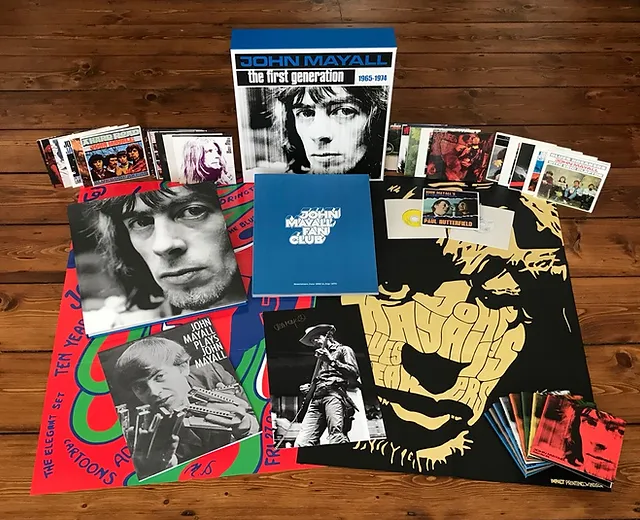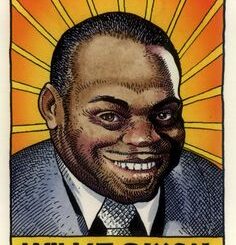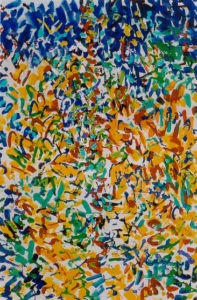A Nostalgic Roundup of the Finest Blues Harmonica Performances

First the flute, then guitar…but Butterfield’s greatest triumph was on blues harmonica. Photo by Larry Hulst/Getty Images
The author, a blues harp player, shares a six-pack of his all-time favorites.
I was once a player.
I learned the harmonica during my freshman year in college (1969-70). My best friend and I wanted to start a band, but first we needed to learn an instrument. I chose the harp because 1) I love the blues, and 2) I like to travel light. We did start a band, cultivated a decent following, but then life got complicated and we scattered. Funny thing about life.
I was never in another band. But I would seek out opportunities to join bands onstage and…jam. I remember once in a bar in Nantucket in 1976, I went to the men’s room and the guy using the urinal next to me was the band’s bass player, the great Harvey Brooks. I summoned the courage to ask him if I could play, gave him an impromptu bathroom audition, and sure enough, was called onstage. I blew the lights out.
The Originals
Blues harmonica was once the dominion of the original Delta blues performers, many of whom moved on to Chicago. I could have devoted this list to them exclusively, but chose three. The best of the rest deserve a mention: Big Walter (Shakey) Horton, James Cotton, Junior Wells, John Lee (Sonny Boy) Williamson I, Carey Bell, and Doctor Ross.
Jazz Harmonica Luminaries
The harmonica was built for playing the blues. The basic chords of 12-bar blues, the I, IV, and V chords of a key, are easily accessible to even non-professional players. The originals listed above mostly remained faithful to the 12-bar blues structure. There are, however, players who have stretched the boundaries of the 12-bar format with their disciplined use of jazz chords and motifs to create complex melodies.
These harmonica luminaries include the great Stevie Wonder, Dennis Gruenling, Carlos del Junco, Jason Ricci, and Wade Shuman. And, of course, John Popper.
1) John Popper, Blues Traveler, “Run-Around”
John Popper’s band Blues Traveler has been around since 1987. Despite its name, Blues Traveler plays classic rock with mainstream hits such as “Run-Around,” “Hook,” and “But Anyway.” John Popper is the lead singer and plays a crazy-good harmonica. Here is a 52-second Popper harmonica solo on the song “Run-Around,” published by Ashley Faye via YouTube:
2) Sonny Boy Williamson II (Aleck “Rice” Miller), “Bye Bye Bird”
There were two Delta harmonica players named Sonny Boy Williamson. Sonny Boy I was already considered one of the most influential blues players around when Aleck “Rice” Miller not only adopted the name but claimed to be the original. The fact that blues historians not only forgave Miller but anointed him as Sonny Boy II is a testament to his skills as a “musician, raconteur, and showman.”
This 1963 video performance of “Bye Bye Bird” sounds very similar to Willie Dixon’s “Bring It On Home,” made famous by Led Zeppelin. This three-minute clip of Sonny Boy Williamson II is published by Reeling in the Years Archive via YouTube:
3) John Mayall, “Room to Move”
John Mayall enjoys the title of Godfather of British Blues. In the sixties, he formed John Mayall and the Bluesbreakers and sustained it throughout the years with various high-profile personnel changes. His roster of guitar players reads like a who’s who: Eric Clapton, Peter Green, Mick Taylor, Harvey Mandel, and Coco Montoya. By the seventies, Mayall embraced jazz and recorded four albums without a drummer.
Mayall has a unique style of harp playing: It’s quick, rhythmic, and chord percussive. Mayall took it to another level with the 1969 release of a live album, Turning Point. His signature song “Room to Move” gave fans some of the old “chickie-chickie.” Listen for yourself in this video from 1982, published by John Mayall on EV via YouTube:
4) Sonny Terry, “Whoopin’ the Blues”
Sonny Terry is perhaps best known for his collaboration with guitarist Brownie McGhee from 1941 through 1975. The duo released several recordings of folk blues and toured frequently. Sonny Terry has an animated blues harmonica style, punctuated by frequent whoops, hollers, and “imitations of trains.”
Here is a video of “Whoopin’ the Blues,” Sonny Terry’s most famous song, two+ minutes long, published by Connor Betts via YouTube:
5) Kim Wilson, “F Fat”
Kim Wilson, the lead singer for the Fabulous Thunderbirds, made his mark vocally on the song “Tuff Enuff,” the T’Birds’ only Billboard hit. But it was Wilson’s creativity on the harmonica that compelled his bandmates to leave the stage during live performances and let Wilson wail away for 10 minutes or so.
Wilson released a solo album in 2003, Lookin’ for Trouble, which contained a collection of his harmonica jump-blues romps. Here is one, “F Fat,” a four-minute video published by MCRecordsNY via YouTube:
6) Little Walter, “Juke”
Little Walter, whose real name is Marion Walter Jacobs, is regarded by blues enthusiasts as the most influential blues harmonica player in the Delta/Chicago Blues era. His harp can be heard in recordings by other blues artists, especially Muddy Waters’ “Got My Mojo Working” and “I’m Your Hootchie Man.” In 1967, one year before his death, Chess Records released Little Walter’s entire catalog of 126 solo recordings.
Little Walter’s first number-one single on Billboard’s R&B chart was “Juke,” recorded in 1952. Here is a video of that song, published by Traveler Into the Blue via YouTube:
Coda
Paul Butterfield Blues Band, “Horn from the Heart: The Paul Butterfield Story”
I testified in a previous article that Paul Butterfield was my first blues harmonica hero. I was inspired by his story and the richness of his sound.
Since then, I uncovered an outstanding preview for the 2018 documentary about “Butter.” Here is both story and sound in a two+ minute video, published by Abramorama via YouTube:


















































































































